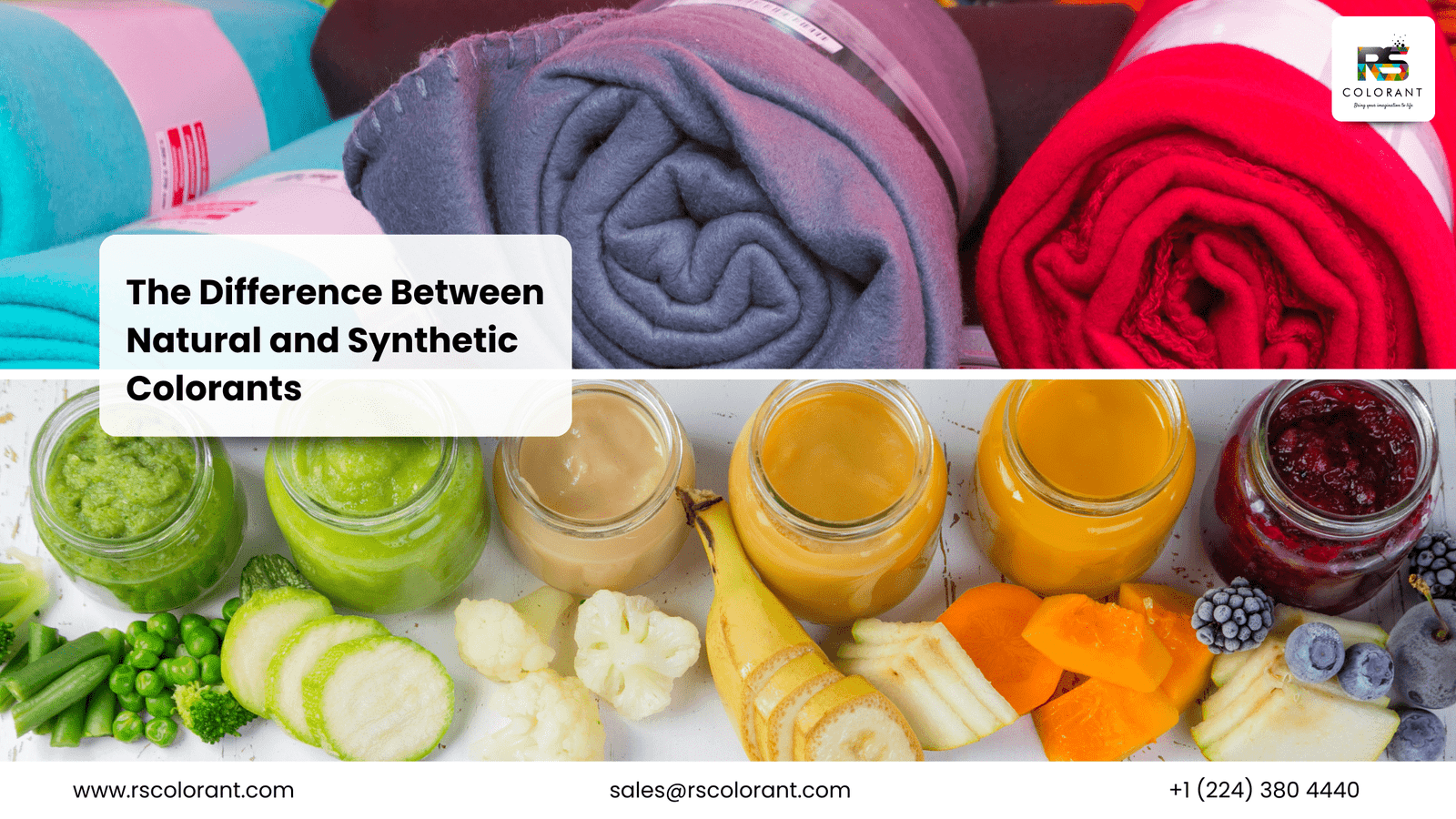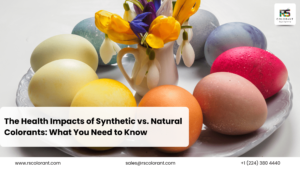Introduction
Colorants are everywhere, from the food we eat to the clothes we wear and the cosmetics we use. But have you ever wondered about the differences between natural and synthetic colorants? This distinction is crucial, not only for health and safety but also for environmental reasons. In this article, we’ll dive into what makes natural and synthetic colorants unique, their applications, advantages, disadvantages, and more.
What Are Colorants?
Colorants are substances used to impart color to various products, including food, beverages, cosmetics, and textiles. Historically, humans have used colorants for thousands of years, starting with natural sources like plants, minerals, and insects. Over time, the development of synthetic colorants revolutionized industries by offering more vibrant and stable colors.
Natural Colorants
Natural colorants are derived from natural sources such as plants, animals, and minerals. Examples include beet juice for red, turmeric for yellow, and spirulina for blue. These colorants are often extracted through processes like boiling, crushing, and fermenting.
Synthetic Colorants
Synthetic colorants, on the other hand, are man-made. They are typically derived from petroleum-based chemicals and are developed in laboratories. Common synthetic colorants include tartrazine (yellow), allura red (red), and brilliant blue. These colorants are popular for their vibrant hues and consistency.
Production Processes
How Natural Colorants Are Made
Natural colorants are made by extracting pigments from natural sources. This process can involve crushing fruits, flowers, or leaves, boiling them to release pigments, and then purifying these pigments for use in various products.
How Synthetic Colorants Are Produced
Synthetic colorants are created through chemical reactions in controlled environments. This process allows for the creation of a wide range of colors that are stable and consistent, making them ideal for industrial applications.
Applications of Natural Colorants
Food and Beverages
Natural colorants are widely used in food and beverages to provide appealing colors without artificial additives. Examples include using beet juice to color red velvet cakes or spirulina for blue smoothies.
Cosmetics
In cosmetics, natural colorants are prized for their gentleness and minimal allergic reactions. Products like lipsticks and blushes often use beetroot or cocoa powder for pigmentation.
Textiles and Fabrics
Natural dyes have a rich history in textile coloring, offering beautiful, earthy tones. Indigo for blue jeans and henna for fabrics are classic examples.
Applications of Synthetic Colorants
Food and Beverages
Synthetic colorants are common in processed foods and drinks due to their bright colors and stability. Examples include sodas, candies, and snack foods.
Cosmetics
In cosmetics, synthetic colorants provide a wide range of shades and are used in everything from eyeshadows to nail polishes.
Textiles and Fabrics
Synthetic dyes are essential in the textile industry for producing vibrant and long-lasting colors. They are used in clothing, upholstery, and many other fabric products.
Advantages of Natural Colorants
Health Benefits
Natural colorants are often associated with health benefits, as they are derived from natural sources. Many of these sources are rich in vitamins and antioxidants.
Environmental Impact
Natural colorants are biodegradable and generally have a smaller environmental footprint compared to synthetic ones.
Consumer Perception
Consumers often perceive natural colorants as safer and healthier, which can enhance a product’s appeal.
Advantages of Synthetic Colorants
Cost-Effectiveness
Synthetic colorants are typically cheaper to produce, making them more cost-effective for manufacturers.
Stability and Consistency
Synthetic colorants offer greater stability and consistency, ensuring that products maintain their color over time.
Wide Range of Colors
The variety of colors available with synthetic colorants is virtually limitless, allowing for more creative and vibrant product designs.
Disadvantages of Natural Colorants
Cost and Availability
Natural colorants can be more expensive and harder to source, which can limit their use in large-scale production.
Stability Issues
Natural colorants are often less stable than synthetic ones, which can lead to color fading or changes over time.
Limited Color Range
The range of colors available from natural sources is more limited compared to synthetic options.
Disadvantages of Synthetic Colorants
Health Concerns
Some synthetic colorants have been linked to health concerns, including allergies and hyperactivity in children.
Environmental Impact
Synthetic colorants can be harmful to the environment, particularly during the production process, which often involves hazardous chemicals.
Consumer Perception
Increasing awareness about the potential health risks of synthetic colorants has led to a negative perception among some consumers.
Health Implications
Safety of Natural Colorants
Natural colorants are generally considered safe, but they can still cause allergic reactions in some individuals. It’s important to check for any known allergies.
Safety of Synthetic Colorants
The safety of synthetic colorants is often debated. While many are approved by regulatory bodies, concerns remain about their long-term health effects.
Environmental Impact
Sustainability of Natural Colorants
Natural colorants are more sustainable as they are biodegradable and often sourced from renewable resources.
Environmental Concerns with Synthetic Colorants
The production of synthetic colorants can result in environmental pollution due to the chemicals used and waste generated.
Regulations and Standards
Governing Bodies and Regulations
Regulations for colorants vary by region. In the U.S., the FDA oversees color additives, while the EU has its own set of regulations.
Differences in Regulations for Natural vs. Synthetic Colorants
Natural and synthetic colorants are subject to different regulatory standards, with synthetic colorants often facing more stringent scrutiny due to potential health risks.
Conclusion
Choosing between natural and synthetic colorants depends on various factors, including cost, application, and consumer preferences. While natural colorants are favored for their health benefits and environmental sustainability, synthetic colorants offer cost-effectiveness and a wider range of colors. Understanding these differences can help consumers and manufacturers make informed decisions about the products they use and produce.
FAQs
- What are the main differences between natural and synthetic colorants? Natural colorants are derived from natural sources like plants and minerals, while synthetic colorants are man-made through chemical processes.
- Are natural colorants always safer than synthetic ones? Not necessarily. While natural colorants are generally safe, they can still cause allergic reactions. Synthetic colorants are rigorously tested but may have long-term health concerns.
- Why are synthetic colorants more widely used? Synthetic colorants are more cost-effective, stable, and offer a wider range of colors compared to natural colorants.
- Can synthetic colorants cause allergies? Yes, some synthetic colorants can cause allergic reactions in certain individuals.
- How can consumers identify natural vs. synthetic colorants in products? Consumers can check product labels and ingredient lists. Natural colorants often have names like “beet juice” or “turmeric,” while synthetic ones might have names like “Red 40” or “Blue 1.”




